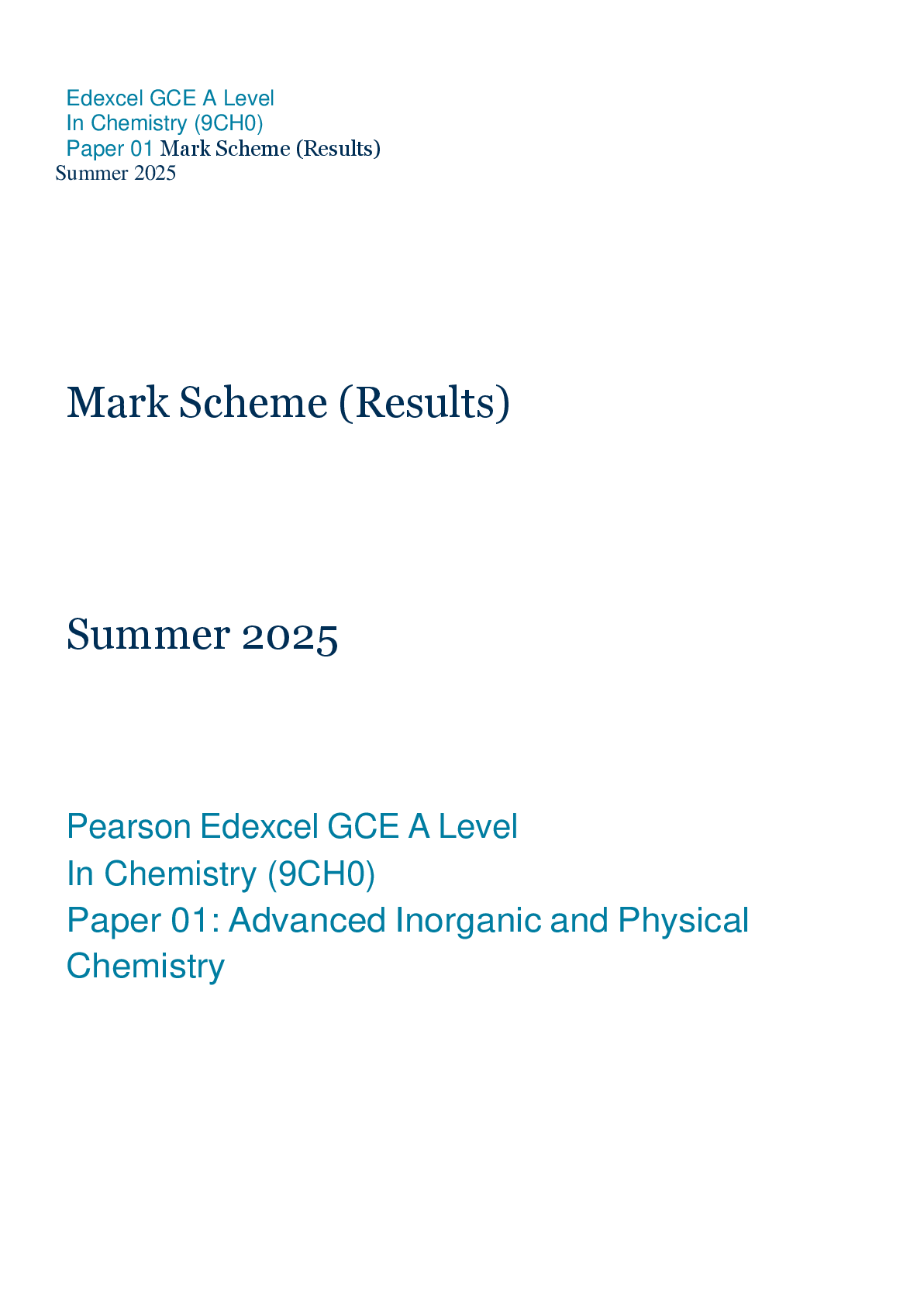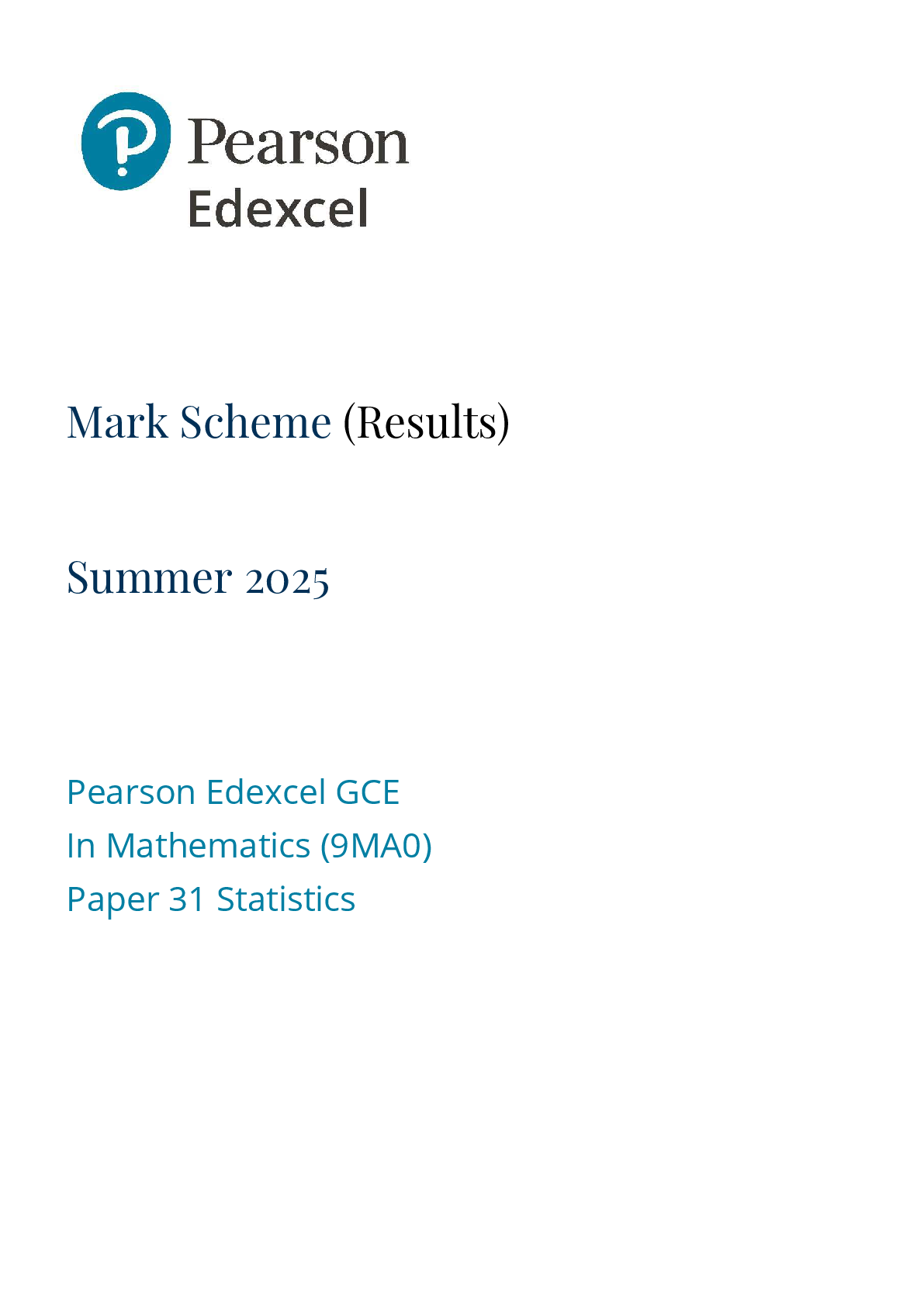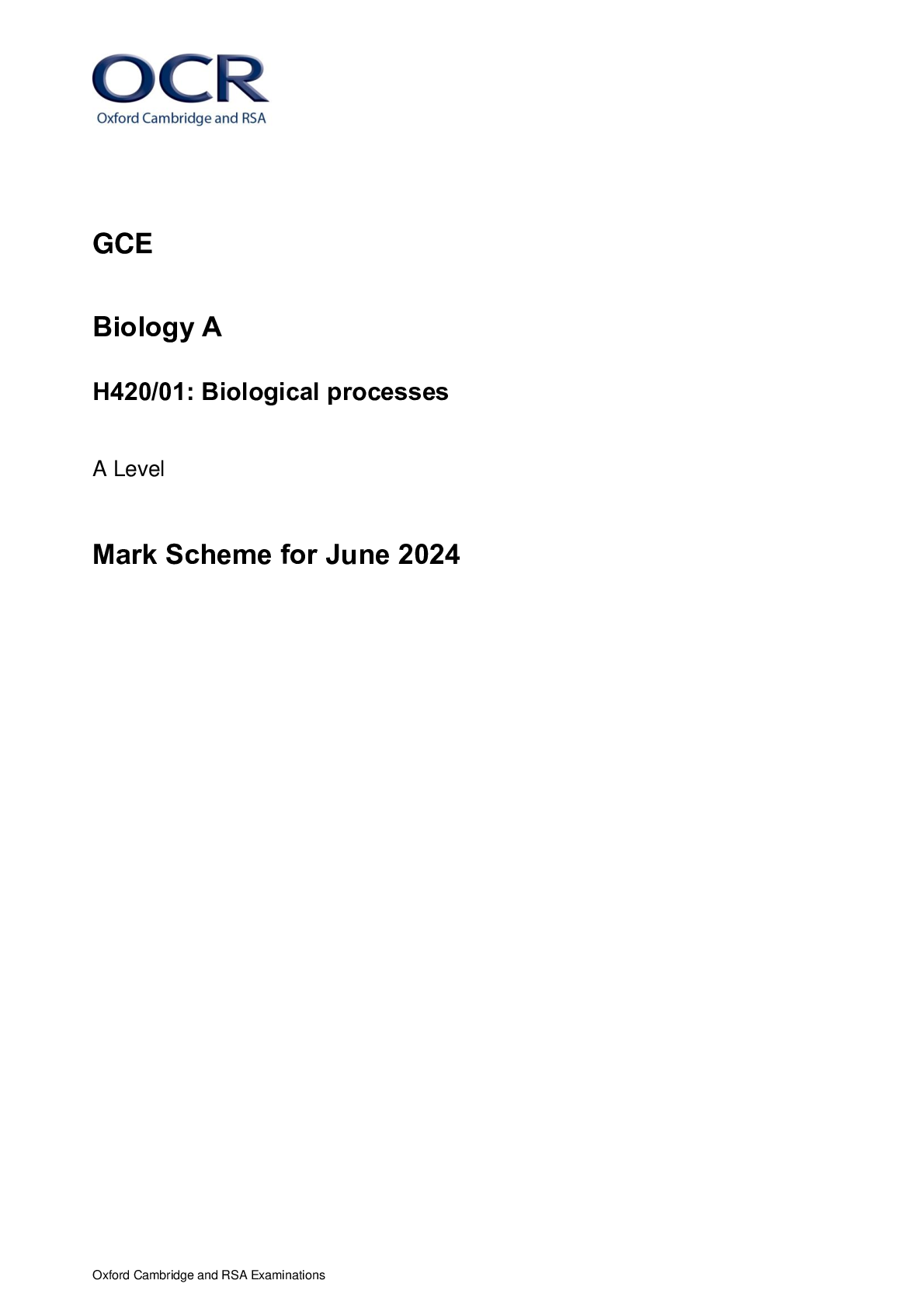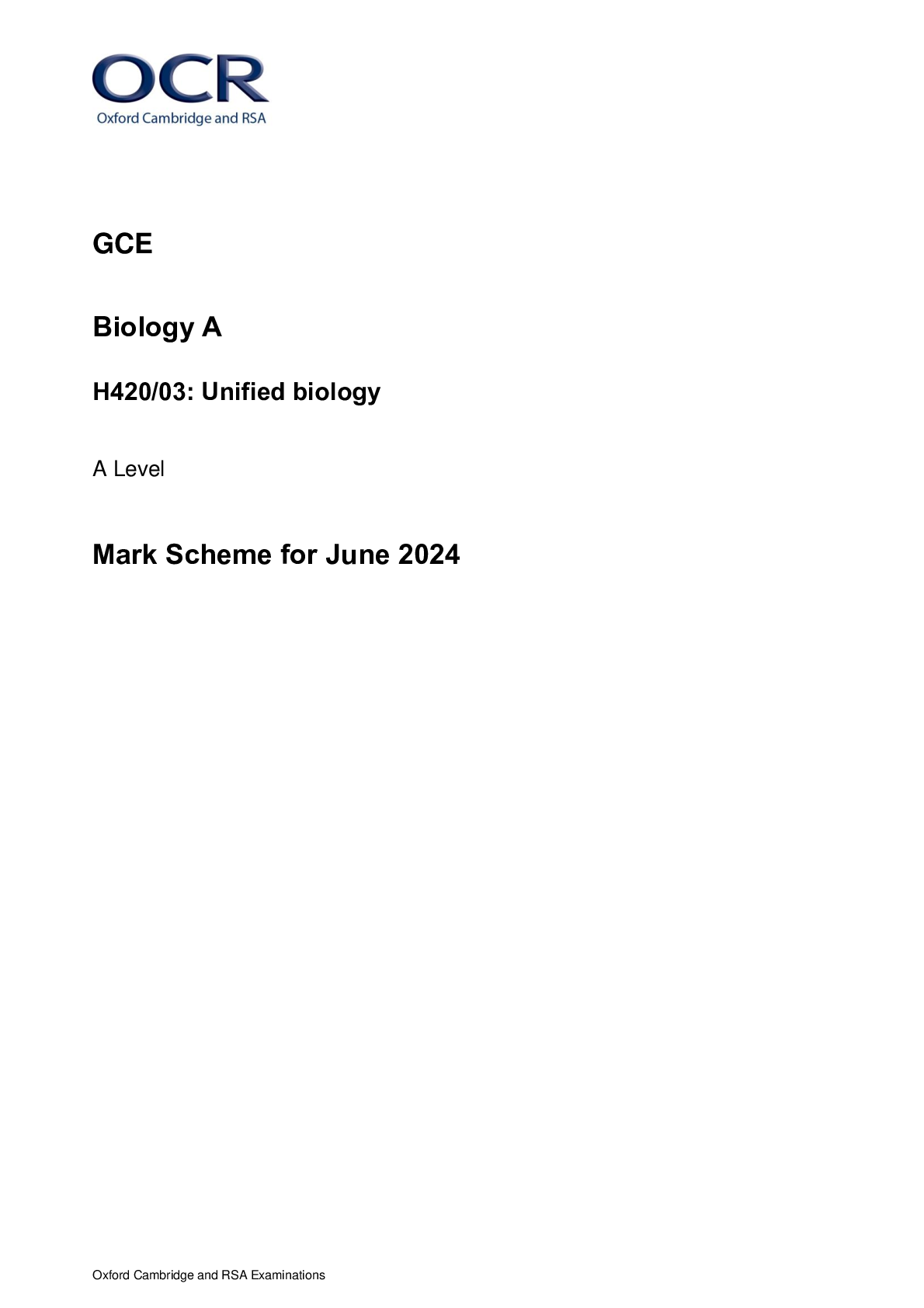Environmental Science > A-Level Mark Scheme > COMMUNITY EXAM PRACTICE QUESTIONS ANSWERED WITH RATIONALES (All)
COMMUNITY EXAM PRACTICE QUESTIONS ANSWERED WITH RATIONALES
Document Content and Description Below
Exercices - Distinguish between habitat and ecosystem. Habitat refers only to the place or the environment where an organism lives, whereas an ecosystem refers to the place and to the other organis ... ms living there as well. - Explain why decomposers are so important in nature. Decomposers are instrumental in returning nutrients to the environment so that they are available for other organisms. - Give two examples of autotrophs and two examples of heterotrophs in the human diet. Answers will vary. Autotrophs can be any plant species that produces something we eat, such as grains, fruits, and vegetables. Heterotrophs can be any animal species that produces something we eat, or fungi that we eat. - From what inorganic molecules can aquatic organisms get their carbon? From carbon dioxide dissolved in water, and hydrogen carbonate ions. - A kind of waterlogged soil found in wetlands and made of partially decomposed plant material: Peat - A hard black rock that can be burned to make electricity or direct heat: Coal - A waxy substance formed from accumulated lipids trapped in sediments at the bottom of oceans: Kerogen - Of all the commonly used petroleum products, this one has the smallest density: Natural gas - Distinguish how a garden greenhouse works and how the greenhouse effect on Earth works. In a garden greenhouse, it is the glass that lets in light but traps heat. On Earth, it is greenhouse gases in the atmosphere that play that role. - Of the greenhouse gases discussed in this chapter, state which one has a warming potential approximately 100 times that of carbon dioxide. Why aren’t scientists talking more about this if it has such a potential to increase the greenhouse effect? Oxides of nitrogen (NOx), but they are less of a concern for the greenhouse effect because their concentrations in the atmosphere are more than 1000 times smaller than the carbon dioxide concentrations. - In what ways could you reduce your consumption of fossil fuels on a day to day basis? [Show More]
Last updated: 1 year ago
Preview 1 out of 8 pages

Buy this document to get the full access instantly
Instant Download Access after purchase
Buy NowInstant download
We Accept:

Reviews( 0 )
$18.00
Can't find what you want? Try our AI powered Search
Document information
Connected school, study & course
About the document
Uploaded On
Jan 23, 2024
Number of pages
8
Written in
All
Additional information
This document has been written for:
Uploaded
Jan 23, 2024
Downloads
0
Views
94

























